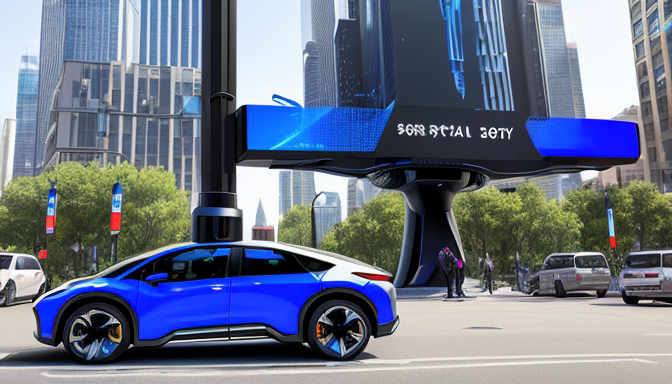Are you ready to dive into the thrilling world of automotive innovations? Buckle up, because the latest updates from the automotive industry are nothing short of exhilarating! From groundbreaking vehicle launches to significant industry shifts, the landscape of transportation is evolving faster than ever before. Imagine a world where your car not only drives itself but also communicates with other vehicles on the road. Sounds like science fiction, right? Well, it’s becoming a reality!
One of the most exciting trends is the surge in electric vehicles (EVs). With advancements in battery technology, these eco-friendly machines are becoming more efficient, with longer ranges and faster charging times. Did you know that the number of EVs on the road is expected to skyrocket in the next few years? It’s not just about going green; it’s about redefining the driving experience.
Moreover, the automotive industry is embracing sustainability like never before. Manufacturers are not only focusing on electric powertrains but also on sustainable practices in production. This shift is not just a trend; it’s a movement towards a cleaner, greener future. As consumers, we have the power to drive this change by choosing vehicles that align with our values.
Stay tuned as we explore more about the electric vehicle revolution and the exciting realm of autonomous driving technologies in the sections to come. The future of transportation is bright, and it’s just around the corner!
Electric Vehicle Revolution
The electric vehicle (EV) revolution is not just a trend; it’s a seismic shift in how we think about transportation. Imagine a world where your car runs on clean energy instead of fossil fuels, significantly reducing your carbon footprint. With advancements in battery technology, the range of EVs is expanding, making them more practical for everyday use. For instance, some of the latest models can travel over 300 miles on a single charge—perfect for those long road trips!
Moreover, the charging infrastructure is evolving at lightning speed. Gone are the days of searching for a charging station; now, you can find them in places you never expected—like shopping malls and even parking lots! This growing network is crucial for increasing consumer adoption. Did you know that in 2022 alone, the number of public charging stations increased by over 30%? That’s a huge leap towards a more sustainable future!
But it’s not just about convenience; it’s also about the environmental benefits. EVs produce zero tailpipe emissions, which means cleaner air for everyone. This is particularly important in urban areas where pollution levels can be alarming. As more people make the switch to electric, we can expect a significant reduction in greenhouse gases, leading to a healthier planet for future generations.
In summary, the electric vehicle revolution is reshaping the automotive landscape in ways we never imagined. With innovative technology, expanding infrastructure, and a commitment to sustainability, the future of transportation is looking brighter than ever!

Autonomous Driving Technologies
Welcome to the future of driving, where autonomous vehicles are not just a figment of science fiction but a reality rapidly taking shape! Imagine sitting back in your car, sipping your coffee, while your vehicle navigates through traffic seamlessly. Sounds dreamy, right? Well, this is becoming possible thanks to the latest advancements in self-driving technology.
At the heart of this revolution is the integration of artificial intelligence (AI). AI systems are being developed to process vast amounts of data from sensors, cameras, and radar, enabling cars to make split-second decisions. This technology is not only enhancing the driving experience but also significantly improving safety on the roads. For instance, the use of AI can reduce human error, which is responsible for a staggering 94% of traffic accidents.
However, it’s not all smooth sailing. The journey towards fully autonomous vehicles is fraught with challenges. Regulatory hurdles and public skepticism remain significant barriers. Governments around the world are grappling with how to legislate this new technology while ensuring public safety. To illustrate this, check out the table below highlighting key players and their current status in the autonomous driving race:
| Company | Technology Status | Regulatory Challenges |
|---|---|---|
| Waymo | Operational in select cities | State regulations vary |
| Tesla | Beta testing Full Self-Driving | Pending federal approval |
| Uber | Paused self-driving operations | Safety concerns and lawsuits |
In conclusion, while the road to fully autonomous driving is still under construction, the advancements we are witnessing today are paving the way for an exciting future. So, buckle up and stay tuned, because the automotive landscape is evolving faster than you can say “self-driving car!”
Frequently Asked Questions
- What are the main benefits of electric vehicles?
Electric vehicles (EVs) offer a cleaner alternative to traditional gasoline cars, reducing harmful emissions and promoting sustainability. With advancements in battery technology, EVs now provide longer ranges and faster charging times, making them more convenient for everyday use.
- How does autonomous driving technology work?
Autonomous driving technology relies on a combination of sensors, cameras, and artificial intelligence to navigate and operate vehicles without human intervention. These systems analyze real-time data from the environment to make safe driving decisions, enhancing road safety and efficiency.
- What challenges does the automotive industry face with electric vehicles?
While the shift to electric vehicles is exciting, challenges remain. Key issues include the need for widespread charging infrastructure, the environmental impact of battery production, and the high initial costs of EVs compared to traditional vehicles. However, ongoing innovations are addressing these concerns.
- Are autonomous vehicles safe?
Safety is a top priority for autonomous vehicles. While they are designed to minimize human error, regulatory hurdles and public perception still pose challenges. Continuous testing and improvements in AI technology are essential to ensure the safety and reliability of self-driving cars.